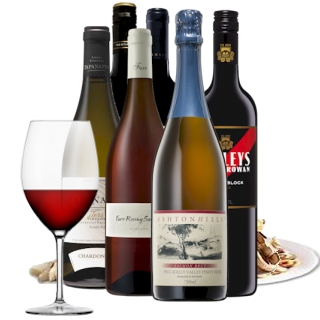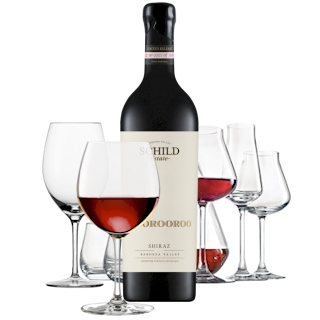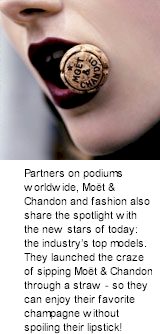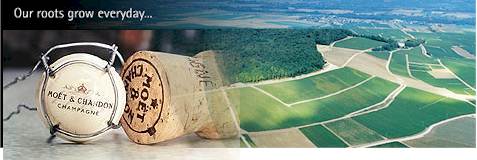


Moet & Chandon is forever seeking to harness the riches of the unique terroir of Champagne and thus produce truly outstanding wines. In 1927, through the influence of Moet & Chandon, the Champagne vineyard was awarded an Appellation d'Origine, which subsequently became one of the first ever AOCs in 1935.

The history of vines in Champagne is inseparably linked to the deep chalk soil. It retains heat from the sun and moisture from the rain which it relases gradually, acting as a natural regulator. The symbiosis of grape and climate continues as the wine matures in the maze of the centuries-old chalky cellars.
The grape varieties grown are eminently suited to the climate and soil, and reflect the unique growing conditions. Chardonnay gives the blend freshness, elegance, finesse and vivacity. Pinot Noir provides fruitiness, body, strength and persistence. Pinot Meunier offers roundness and bouquet which admirably complement the other two.
Mild Atlantic breezes alternate with continental rigours. The Champagne vineyards, the most northerly in France, are regularly threatened by storms, hail and late frosts. The grapes mature slowly in this climate and by transcending these factors, the wonder of champagne is born.

All great wines are the product of the perfect union of soil and climate. But in Champagne, the human factor is more vital than in any other winegrowing area. Over the course of the centuries, Moet & Chandon winegrowers have held their own in the face of tumultuous historic events and the whims of nature. They have fashioned the soil and vines into exemplary vineyards. Moet & Chandon scientists and oenologists are at the leading edge of viticultural research.
Moet & Chandon wines are produced by a team of some ten oenologists, each with complementary experience acquired in a range of wine-growing regions around the world. The driving forces behind the team are its shared expertise, its combined sensitivities and its ongoing commitment to keeping abreast with trends, in particular through travelling and meeting with fellow wine experts.
Indeed, it is this guiding aim which determines the oenologists' decisions on which, in turn, the wine's final shape will depend.
The assemblage or blend of grape varieties is critical in determining the champagne's distinctive style. It is largely during this phase of the production process that a unifying character emerges, the complete, well-rounded and radiant personality which distinguishes all of Moet & Chandon's wines. The range from which the team can choose includes over 150 crus from the house's own vineyard as well grapes purchased from other wine growers. The three Champagne varieties, Pinot Noir, Pinot Meunier and Chardonnay, continue to be the wine's mainstays, offering their complementary features and specific synergies.
